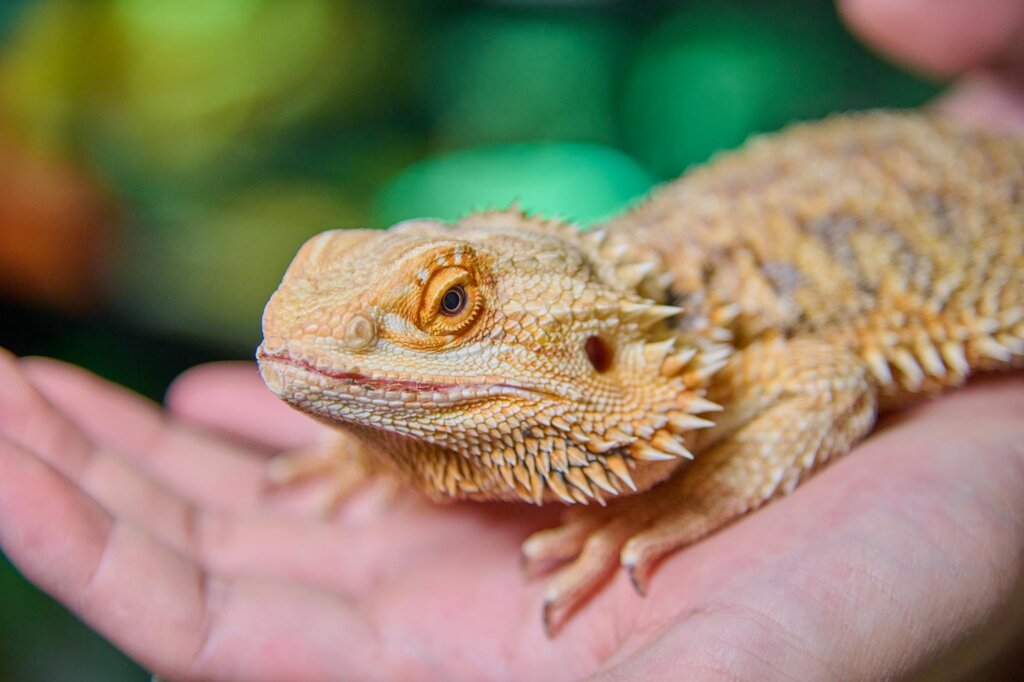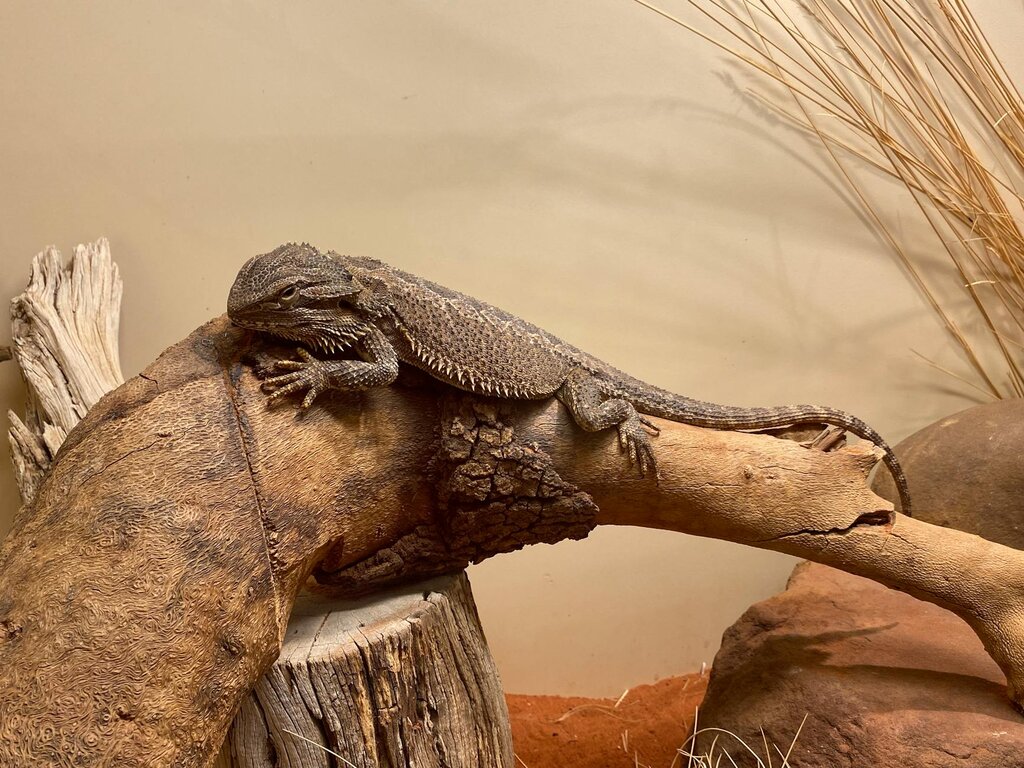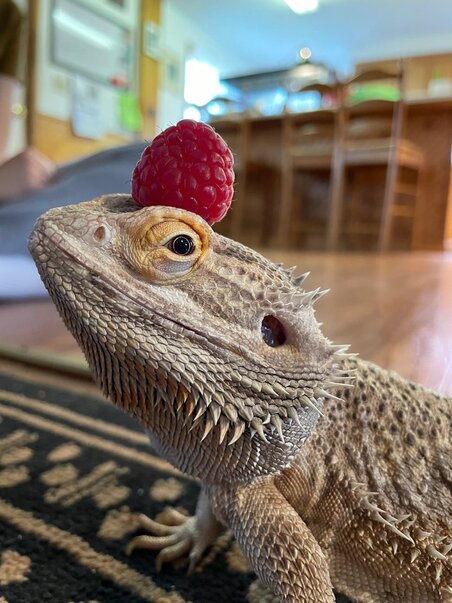Last Updated: 29/05/2025
Bearded Dragon Care Guide
Learn how to care for Bearded Dragons with our Vet-written guide on all you need to know!
Author: Dr Nicole Wynne BSc BVMS MANZCVS (Unusual Pets)
Reading Time: 15 minutes - medium read
Last Updated: 29/05/2025
Learn how to care for Bearded Dragons with our Vet-written guide on all you need to know!
Author: Dr Nicole Wynne BSc BVMS MANZCVS (Unusual Pets)
Reading Time: 15 minutes - medium read
Bearded dragons, both Central (Pogona vitticeps) and Western (Pogona minor minor) dragons, are delightful little pets that are full of personality. However, they have some very specific husbandry requirements as they are Australian desert specialists. In an optimal environment, they're low maintenance pets that require a close eye on parameters like temperature and UV access to thrive. With careful planning, preparation, and ongoing monitoring, you'll set your new scaly friend up for a lifetime of lizard shenanigans!
As a native Australian species, they are protected in many states. Even though they are a common species, a licence is required in most states for keeping them. In all states, a different licence is required to take them from the wild, and so it is illegal to keep any dragon as a pet if found in the wild. It is best to get your dragon from a reputable breeder, and captive-bred animals are also at a much lower risk of harbouring parasites.
So, you've got your licence sorted and you're thinking about welcoming a bearded dragon into your home? Before you do be sure to read these frequently asked questions so you are prepared!

The key to a thriving bearded dragon is optimal husbandry and environment. Therefore, it pays in the long run to take your time setting up your enclosure, and make sure that all parameters like heat, UV light, substrate, humidity, and furniture are as good as possible. Plus, it is much less stressful on your dragon to introduce them to a fully furnished, ready to go enclosure.
Always get the largest enclosure you can, even for a juvenile, as they'll definitely grow into it, and it saves you from having to get a new one later on. You can never have an enclosure that is too big, but you can definitely have one that is too small. You want an enclosure that is at least 300 litres in volume, prioritising horizontal rather than vertical space. However, bearded dragons definitely can climb, so you can get a little creative to fit a smaller space in your home.

Regular, gentle handling is the key to helping your lizard feel comfortable being handled, reducing the likelihood of them becoming stressed. This is particularly important when lizards are juveniles, as positive handling experiences will increase the likelihood that they are good to handle as they grow. Bearded dragons can be handled up to twice a day, but ensure that each session does not last longer than your dragon's comfort. In the beginning, handling sessions should last no more than 10 minutes. Always wash your hands thoroughly before and after each handling session, and separate handling sessions from feeding sessions.
Signs of comfort include slow, deliberate movements, and gentle head bobs as they investigate their new environment.
Never allow children or people inexperienced with reptiles to handle your lizard unsupervised, as injury or escape may occur. They can be surprisingly fast when they're worried!
Regular exposure to natural sunlight is good for all reptiles, and this can be a positive handling experience for you and your lizard! On sunny days where it is not too cold, it can be enjoyable to sit outside with your dragon and a good book. Ensure that your dragon can't get out of the area easily, and can't get away and hide or become lost. A small harness is a great option for larger dragons!
At least an hour a week is a good minimum for natural sunlight, and there's no such thing as too much natural sunlight for Australian reptiles.
All dragons will shed regularly, and young animals may shed as often as every 3 weeks when they are growing rapidly. Signs that your lizard is going into shed include duller colouration and behavioural change such as hiding away, soaking in the water dish, or inappetance.
If it looks like your dragon is preparing to shed, the best thing to do is ensure that the water source has been freshly cleaned and refilled, ensure that the temperature is optimal, then leave your dragon alone until they have finished shedding. This includes stopping handling. Unlike snakes, lizards shed in pieces, and it is normal for shed skin to come off in large chunks.
After a shed, closely inspect your lizards fingers, toes, and tail for any retained pieces of shed, as these can start to constrict the appendage and cut off blood supply. If you are concerned, book an appointment with your vet, and you can soak your lizard in warm water for 10-20 minutes once to twice a day until then to see if it will help loosen the retained shed.
The most important thing to remember when starting your reptile-keeping journey - enjoy! Reptiles are unique, interesting pets that have a lot of joy to give, and individuals will develop their own special personalities as time goes on. Bearded dragons are rewarding pets, and they often grow into impressive, charismatic adults.
Our experts continually monitor the health and wellness space and we update our articles when new information becomes available.
Veterinarian, MANZCVS (Unusual Pets)
Dr. Nicole graduated from Murdoch University in WA in 2014, and immediately started working in exotics-only practice. She was also one of the few vets in Australia that would routinely see venomous snakes ranging from death adders to tiger snakes. Although Dr. Nicole enjoys seeing all exotic pets, her absolute favourite are rabbits. She passed her Australian and New Zealand College of Veterinary Scientists Membership (MANZCVS) exam in unusual and exotic pets in 2021.
Most reptiles require some sort of licence within Australia, so check your local requirements as the first step towards getting your dragon. Most licences take about a week to process. The licences for bearded dragons are aimed towards beginner keepers.
